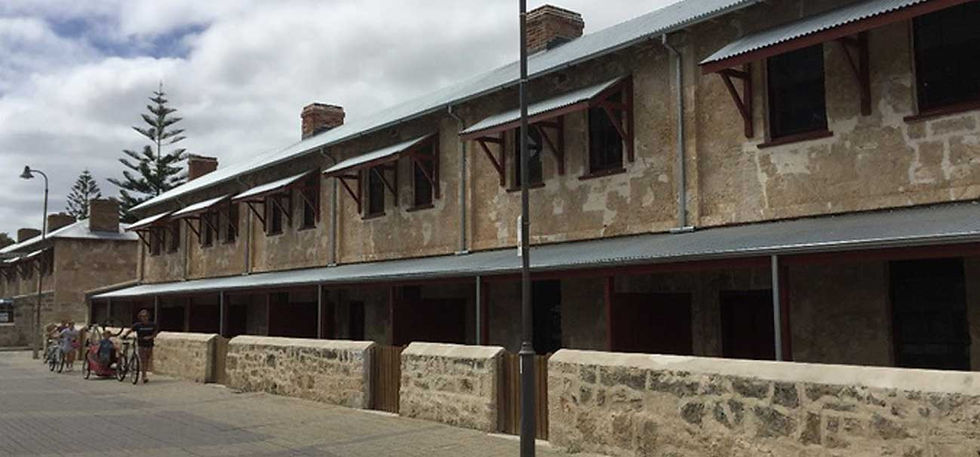
Warders' Cottages

Significance
The 1850s Warder’s Cottages are a key historical convict-built component of the Fremantle Convict Establishment. They supported the function and operation of the Prison for most of its history, retaining their purpose-built use as warders’ accommodation until 1989. They also formed the ‘city frontage’ of the convict grant through their location on the western edge of the grant area, and at the bottom of the Fairbairn Street Ramp. Architecturally and aesthetically, the Terrace row is substantially externally intact. In its use of limestone for construction it demonstrates the favoured building material of the Prison. This helps to maintain an aesthetic if not a visual connection with the Prison.
Those parts of the Warders’ Cottages that are of exceptional significance are:
-
19–29 Henderson Street
-
31–41 Henderson Street
-
7–17 Henderson Street
Principles
Note: As private property, not controlled by Fremantle Prison, the following policies and actions are provided as guidance to the owners of the cottages, who are also encouraged to give consideration to this HMP in current and future management of the cottages.
PRINCIPLE 208: The Warders’ Cottages should be retained and conserved while sympathetic adaptation and uses is encouraged.
PRINCIPLE 209: Any works to, or repairs of, the limestone fabric should be consistent with the conservation policies and guidance provided in this HMP.
PRINCIPLE 210: A sympathetic setting to the buildings should be maintained, while views are maintained of the front of the dwellings.
PRINCIPLE 211: Links with Fremantle Prison, whether visual or otherwise, should be reinforced. This can be done through heritage interpretation measures which are essential to conveying the cottages’ history and historical association with the Prison.
PRINCIPLE 212: No new structures or hard and soft landscape elements should be introduced to the setting in front of the cottages.
Structures & Spaces Actions
ACTION 102: Any interpretation introduced should be clearly seen and read when viewing the cottages. The interpretation should also alert readers to the presence of the Prison and encourage further investigation of the Prison history and connection with the cottages.
